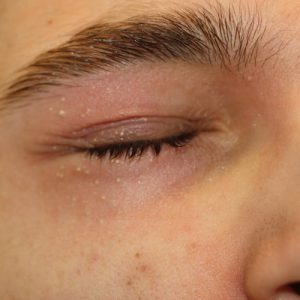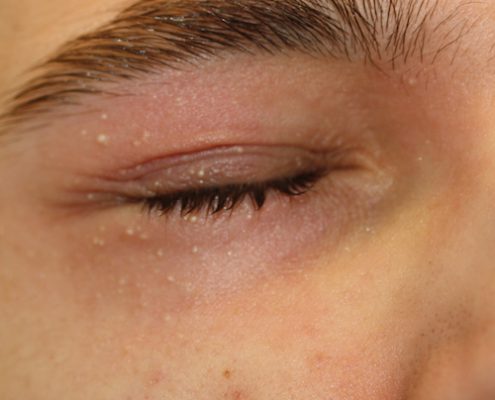What are Milia?
Milia are tiny white cysts that appear on the skin. The word ‘Milium’ refers to an individual cyst or bump, but they usually appear in groups, which are known as ‘Milia’.
They can appear on the face or body, but are especially common on the nose, eyelids, forehead and cheeks, which makes them hard to miss.
They’re commonly seen in newborn babies and are sometimes referred to as ‘baby acne’ or ‘milk spots’. However, they can strike at any age. The nature of adult milia is a slightly different condition to that seen in babies and treatment options differ accordingly.
What causes milia?
The cysts occur when keratin (a strong protein which occurs naturally in skin, hair and nail cells) becomes trapped beneath the surface of the skin. In adults and older children, milia often follow some type of damage to the skin, e.g.:
- blistering (due to a skin condition, sensitivity or reaction)
- burns
- intensive skin resurfacing (e.g. microdermabrasion or laser)
- long-term use of steroid creams
- long-term sun damage
Infant milia will usually clear up of their own accord in a few weeks, as the skin becomes develops more resilience. However, when milia occur in adults, it can take much longer to clear up, lasting for months or even years.
Are milia harmful?
Milia are not dangerous, so for most patients the concern is largely cosmetic. The appearance of a patch of milia on the nose or cheeks is very difficult to hide. Even under makeup, the raised bumps are visible.
They are not contagious to other people, but do have a tendency to spread on the same patient.


